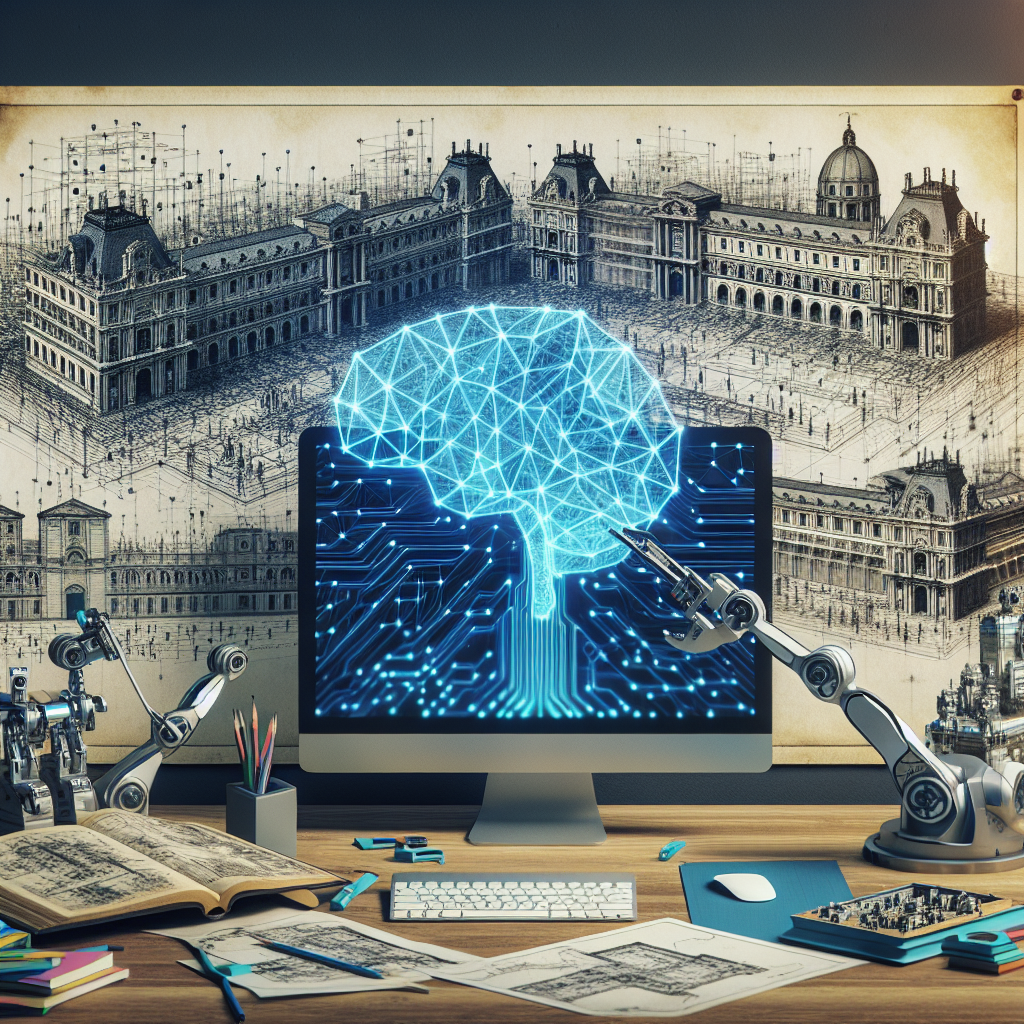Artificial Intelligence (AI) is revolutionizing industries across the board, and the field of architecture is no exception. From automated design processes to predictive modeling, AI is playing an increasingly important role in shaping the way buildings are conceived, designed, and constructed. In this article, we will explore AI’s role in architectural history, its current applications, and its potential impact on the future of architecture.
AI in Architectural History
The use of AI in architecture can be traced back to the early days of computer-aided design (CAD) software in the 1960s. These early systems allowed architects to create digital models of buildings, which could then be manipulated and analyzed in ways that were not possible with traditional drafting tools.
As computer technology advanced, so did the capabilities of AI in architecture. In the 1980s, researchers began exploring the use of expert systems – AI programs that could mimic the decision-making processes of human experts – to help architects with tasks such as material selection, structural analysis, and cost estimation.
In the 1990s, AI began to be used in more sophisticated ways in architecture. Generative design algorithms, which use AI to explore vast numbers of design options and identify the most optimal solutions, began to be used to create complex, innovative building forms that would have been difficult or impossible to conceive using traditional methods.
Today, AI is being used in architecture in a wide variety of ways. From automated design tools that can generate thousands of design options in minutes, to predictive modeling algorithms that can analyze data to optimize building performance, AI is changing the way architects work and the buildings they create.
Current Applications of AI in Architecture
One of the most exciting developments in AI in architecture is the use of generative design algorithms. These algorithms use AI to explore vast numbers of design options and identify the most optimal solutions based on a set of predefined criteria. This allows architects to quickly generate a wide range of design options, evaluate them against various criteria, and identify the most promising designs.
Generative design algorithms are being used in a variety of ways in architecture. For example, architects can use these algorithms to automatically generate building layouts that maximize natural light, minimize energy consumption, or optimize views. These algorithms can also be used to create complex, innovative building forms that would have been difficult or impossible to conceive using traditional methods.
Another important application of AI in architecture is in predictive modeling. By analyzing vast amounts of data, AI algorithms can predict how a building will perform in terms of factors such as energy consumption, daylighting, and thermal comfort. This allows architects to optimize their designs for performance, leading to buildings that are more sustainable, comfortable, and cost-effective.
AI is also being used in architecture to automate repetitive tasks and improve efficiency. For example, AI-powered software can automatically generate construction documents, analyze building codes, or optimize building layouts, saving architects time and reducing the risk of errors.
Future Impact of AI on Architecture
The potential impact of AI on architecture is vast. As AI technology continues to advance, we can expect to see even more innovative applications of AI in architecture. For example, AI could be used to create buildings that respond dynamically to their environment, adjusting their form and performance in real-time based on factors such as temperature, occupancy, or sunlight.
AI could also be used to create buildings that are more responsive to the needs of their occupants. By analyzing data on how people use buildings, AI algorithms could help architects design spaces that are more comfortable, efficient, and user-friendly.
Another area where AI is likely to have a significant impact on architecture is in the design process itself. As generative design algorithms become more sophisticated, architects may be able to collaborate with AI systems to create designs that are truly innovative and groundbreaking.
FAQs
Q: Will AI replace architects?
A: AI is unlikely to replace architects entirely. While AI can automate certain tasks and improve efficiency, the creative and strategic thinking that architects bring to the design process is still essential. Instead, AI is more likely to augment the capabilities of architects, allowing them to work more efficiently and create more innovative designs.
Q: Is AI in architecture ethical?
A: Like any technology, AI in architecture raises ethical questions that must be considered. For example, AI algorithms may inadvertently reproduce biases present in the data they are trained on, leading to designs that perpetuate inequality or discrimination. Architects using AI must be mindful of these potential pitfalls and take steps to ensure that their designs are fair, inclusive, and ethical.
Q: How can architects learn to use AI?
A: Many architecture firms are investing in training programs to help their staff learn how to use AI tools effectively. Additionally, there are a growing number of online courses and workshops that teach architects how to use AI in their practice. By investing in training and education, architects can ensure that they are well-equipped to take advantage of the benefits of AI in architecture.
In conclusion, AI is playing an increasingly important role in architecture, from automated design processes to predictive modeling. By leveraging the power of AI, architects can create more innovative, sustainable, and user-friendly buildings. As AI technology continues to advance, we can expect to see even more exciting applications of AI in architecture, shaping the future of the built environment in ways we can only begin to imagine.

